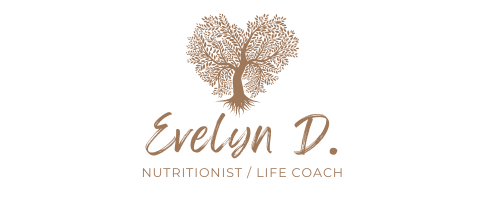 This may seem obvious, but our brains are running the show when it comes to how we function, feel and whether or not we burn or store fat.
This may seem obvious, but our brains are running the show when it comes to how we function, feel and whether or not we burn or store fat.
It’s constantly sending signals to all of the systems of the body based upon how we PERCEIVE situations.
KEY WORD: PERCEIVE.
If the brain perceives something as threatening, the hypothalamus in the brain sends signals to the pituitary gland and the adrenals to produce hormones like cortisol to prepare the body to FIGHT or get the heck outta Dodge!
And although we would be dead without cortisol, too much – too often – leaves us feeling fat and fried.
“How we perceive stress is more important than the stress itself.”
This “fight or flight” or “sympathetic” response is our primary survival mechanism. We would be dead without it. It’s what saved us back in the day when being chased by bears and saber tooth tigers. The thing is, we’re not being chased by bears or tigers anymore (well, most of us aren’t), yet we perceive things – like an angry email, running late, the nightly news, an unexpected expense, or even traffic – in a fight or flight manner anyway.
And we get exposed to these little bitty stressors ALL… DAY…. LONG.
In this state, the nervous system shunts its energy to the muscles of the arms and legs (to run or attack) and away from other critical systems of the body (like digestion, reproduction, elimination and detoxification). This chronic stress plagues our “always on” digital culture.
Bathing in stress hormones is a recipe for brain fog, fat storage, poor sleep, poor digestion, insulin sensitivity, infertility and flat out misery (not to mention chronic illness).
Instead, we want to “soften” into the flip side of the sympathetic system which is the “parasympathetic” response. This mode is our relaxation, “rest and digest”, or “breed and feed” mode. This is the state where we can assimilate nutrients and where our body’s hormonal, digestive, immune and other metabolic processes can function properly. The parasympathetic takes us to that calm, balanced, peaceful place.
Aaahh…Sounds nice, right? How do we go there?
There are many ways, but I have learned and practice these 3 simple approaches:
1. CONTINUALLY CHECK-IN (aka Mindfulness) – The key for me is to always check in with how I’m perceiving and dwelling in a situation. And when I say always – I mean always – like all day long. I have a simple mantra/prayer that I use when I catch myself winding up, feeling overwhelmed or jumping to the worst case scenario.
As I check in, I actually connect inside my body to pinpoint where I’m feeling sensation – like constriction or tension. I ask myself ‘what’s going on’? Where is this coming from? Does this situation deserve my stress and worry? (usually it doesn’t). Then I say my little prayer/mantra to myself, feel it, trust all is well and let it go.
VERY IMPORTANT NOTE: If there is a stress or a painful emotion to be experienced, do not avoid it or suppress it. I used to do this ALL THE TIME to try and be positive (in a high vibration) and found that these ‘not so great’ feelings are supposed to be acknowledged, experienced and let go.
There is no pain bypass. I heard Dr. Christiane Northrup say:
“If you don’t feel it – you don’t heal it.”
And it’s true.
That’s because, the pain gets buried in the body and it makes it that much harder to connect and release it. So better to deal with it, feel it and then let it go rather than stuff it down and avoid it.
2. RELEASE IT – Through yoga, breath work, body work (i.e., massage and PT for me), prayer, meditation, visualization and/or SWEATY EXERCISE! I find sweaty exercise to be the most effective release method (for me) because it’s easier for me to physically release stress than to allow it to release through stillness. (I’m always working on surrendering more – to not be so much of an impatient control freak, but it takes time :)).
Other release techniques might include intimacy with your partner (wink wink), talking things out with a friend or therapist, journaling, art, gardening, grounding in nature..really anything where you acknowledge and release the perceived stressor physically and energetically so that it doesn’t fester inside.
3. NURTURE YOURSELF – You have to eat nourishing, real, whole foods (not processed ones) to feed your cells and your microbiome which effects your brain health in a really profound way. (I’ll be posting more on that later). Also, getting good sleep every night is a way to nurture yourself and is critical to repair and recovery. Deep REM sleep allows the subconscious to process emotions too.
Getting a body treatment like massage or PT is also amazing for nurturing (and releasing as mentioned above). Other things like taking a class, hanging with friends, helping others, warm hugs, even stroking your arm or face can release calming hormones and be very self nurturing.
BEWARE: There’s a fine line between self care and numbing out/avoiding feeling pain, so see Step 1 and check in with yourself.
For example, I enjoy a nice glass of wine or two on a Friday evening. It brings me to a calmer state after a long week and it makes food prep more relaxing and pleasurable for me.
BUT…
if I reach for a third glass, I find myself disconnecting from my family and my feelings. I don’t sleep well and feel crappy the next day.
So use treats like alcohol, indulgent foods and even things like shopping, exercise or socializing with vigilant awareness.
Another quick example: A client of mine tends to avoid her stressful feelings by distracting herself with both comfort food and family drama – anything to prevent her from dealing with her own “ISH”. Don’t fall into that trap either – it’s very easy – especially for moms – to lose themselves in their family’s problems rather than to admit that they too need nurturing.
Here’s what I invite you to do: Play around with how you’re perceiving everyday things as stress. You might find that that text ‘ding’ is making your heart race. Or that the horrible stories on the evening news effect how you eat and digest dinner.
Know that you have choices in how you perceive stress and for some things, you can even change how you allow them to enter into your consciousness (meaning – try shutting off the news and silencing your phone).
Please let me know if any of this resonates with you. Were you expecting more nutrition advice? Don’t worry, I’ll post more on the many nutrients that can nourish the brain soon. Check out some of my favorites in my e-store by searching brain. Food and supplements are very important, but healing really has to start from the inside.
Do you have a practice, prayer or mantra that you use to check in with yourself? Please drop me a line to share how you manage your brain’s response or if there are other topics you’d like to hear about in the near future…Until next time…Be present and be well!
Take care,
Ev




